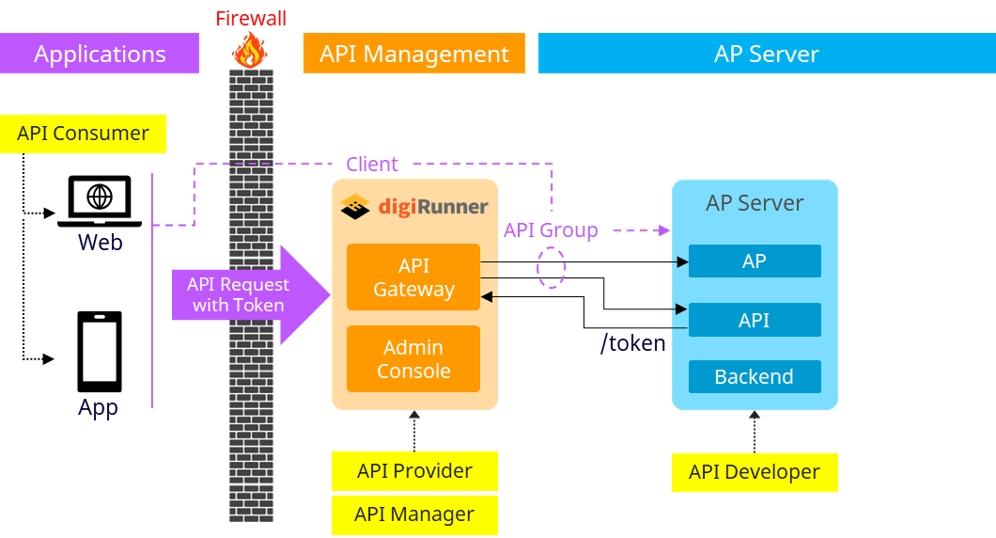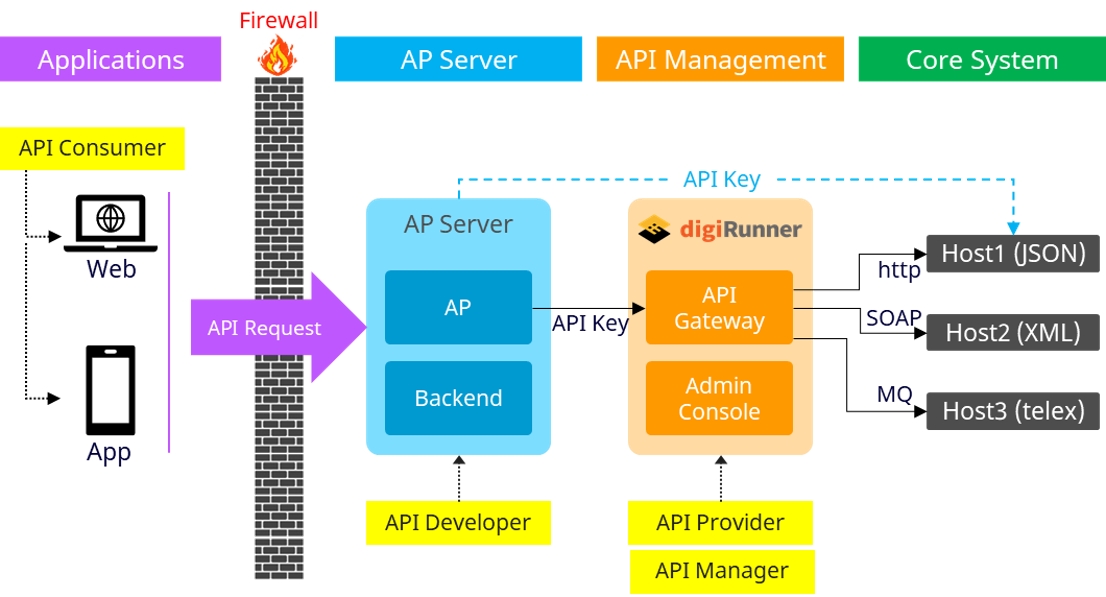Integration
The digiRunner platform offers robust integration capabilities, functioning as a proxy or router for API requests. This integration architecture facilitates seamless communication between API consumers (e.g., applications, web clients) and backend servers or core systems. It ensures secure data transfer, access control, and load balancing, supporting various data formats and protocols for flexible integration.
dAAP: digiRunner as a Proxy (Client to Server)
In this mode, digiRunner acts as a proxy for API consumers, such as web or mobile applications, to connect to backend services securely.

Key Features
API Registration: Allows backend server APIs to be registered, making them accessible to applications.
Client Account Configuration: Supports the creation of client accounts to represent API-consuming applications.
API Grouping: Simplifies API management and authorization by organizing APIs into groups.
Access Authorization: Enables assigning API groups to client accounts for controlled backend API access.
Workflow
API consumers (e.g., web or mobile applications) send requests with tokens.
Requests pass through the firewall to the digiRunner API Gateway.
The API Gateway validates, processes, and routes the requests to the corresponding backend APIs based on the assigned API groups and client permissions.
dAAR: digiRunner as a Router (Server to Server)
In this mode, digiRunner functions as a router, enabling secure and efficient communication between servers, including core systems, across various protocols.

Key Features
Server-to-Server API Communication: Supports direct API requests between servers, secured with API keys.
Protocol Support: Compatible with multiple protocols (e.g., HTTP, SOAP, MQ) to integrate with diverse core systems and legacy environments.
Workflow
API requests from clients (API consumers) are forwarded through digiRunner to designated core system hosts.
Requests are routed using the appropriate protocol (e.g., JSON over HTTP, XML over SOAP, or Telex over MQ) based on the host and data requirements.
Core System Integration
The API Gateway securely routes data to the correct endpoints, ensuring protocol compatibility and seamless communication across systems.
dAAPR: digiRunner as Both Proxy & Router (Client to Server, Server to Server)
In the dAAPR configuration, digiRunner simultaneously functions as both a proxy and a router, enabling versatile integration between clients, servers, and core systems.

Key Features
Client to Server: As a proxy, digiRunner manages token-based API requests from applications and routes them to the appropriate backend API.
Server to Server: As a router, digiRunner manages API key-based communication between servers and core systems, supporting multiple protocols for interoperability.
Workflow
Token-based API requests are processed by the API Gateway for client-to-server communication, while API key-based requests manage server-to-server interactions.
Requests are routed to the appropriate hosts based on protocol requirements, facilitating flexible data exchange across systems.
Use Case
This dual configuration is ideal for environments that require both client-server and server-server communication, offering comprehensive integration capabilities.
Was this helpful?
